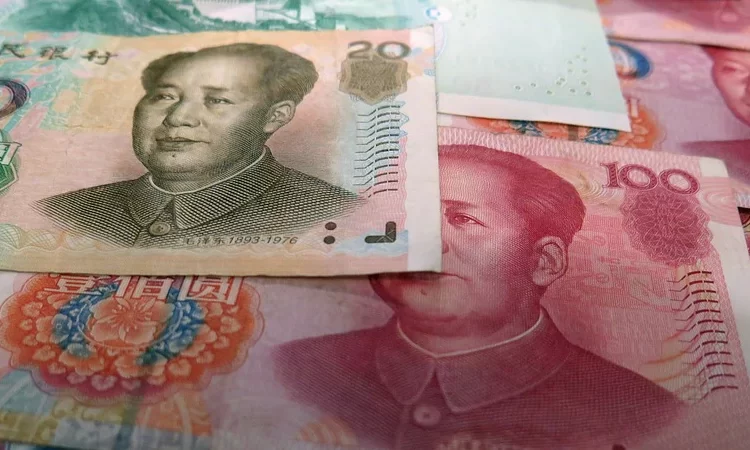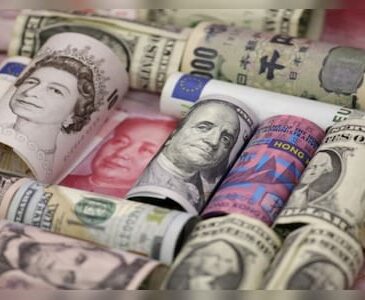The Resilience And Challenges Of China’s Renminbi Exchange Rate – Analysis – Eurasia Review

By Wei Hongxu
For a period of time, as U.S. inflation persists, expectations for a Federal Reserve’s rate cut have been continually postponed. Corresponding adjustments in the capital markets have triggered a sustained strengthening of the U.S. dollar (USD), leading to the continuous depreciation of currencies in the Asian region. This has prompted central banks of some countries to intervene, and G7 countries have also issued statements hoping to maintain stability, temporarily stabilizing the market. However, the escalating conflict in the Middle East has once again struck the foreign exchange market last week, thereby dragging down Asian currencies.
According to media reports, in the days between April 15 to April 19, the Indian rupee was just a step away from its historical low, while the Indonesian rupiah against the USD reached a new low in four years. Meanwhile, the Bank of Indonesia continues to increase its intervention efforts to support the rupiah and urges government-supported enterprises to avoid large-scale purchases of dollars. At the same time, Dao Minh Tu, Deputy Governor of the State Bank of Vietnam stated that it is ready to intervene in the foreign exchange market if necessary. In addition, the Japanese yen and the South Korean won are still maintained at historical lows, and the Bank of Korea has repeatedly stated that it will respond to excessive fluctuations in the foreign exchange market.
Many market participants are worried that this situation will lead to another round of the Asian financial crisis. In China, there are concerns about the impact on the renminbi (RMB), fearing instability in the Chinese financial system. However, from the performance, it appears that the Chinese currency has not been greatly impacted. The offshore RMB, which represents international investor demand, has risen slightly this week, while the onshore RMB has seen a slight decrease, falling by only 0.04% this week. This fluctuation has maintained relative stability compared to other Asian currencies, including the Japanese yen. Researchers at ANBOUND have previously noted that some seasonal changes in the RMB exchange rate tend to depreciate from the beginning of the year to the middle of the year while showing a slight strength towards the end of the year and the beginning of the following year. Officials from the State Administration of Foreign Exchange (SAFE) explained that this is related to the demand for the USD in the trade cycle. Currently, the fluctuation of the RMB exchange rate still has not deviated from this cyclical change, and there is no trend change like other currencies.
Considering other major currencies, from March 11 to April 18, the Japanese yen against the USD fell by 5.15%, the British pound fell by 3.23%, the euro fell by 2.7%, and the Australian dollar fell by 3.08%. The offshore RMB against the USD, reflecting international investors’ expectations, fell by 0.68%, with the lowest point reaching 7.2831. Although the RMB against the USD continued to decline, it has appreciated relative to other major currencies, reflecting the strong resilience of the RMB exchange rate.
As previously mentioned by researchers at the ANBOUND, exchange rates reflect changes in the economic fundamentals of each country. The resilience of the Chinese economy lies precisely in the strong resilience of the RMB exchange rate. In the first quarter, China’s economy grew 5.3%, and its foreign trade is gradually recovering. Although the USD has shown strength, leading to a relatively weak performance of the RMB, this gradual depreciation still reflects the economic strength behind the two currencies and will not bring turmoil and impact to the Chinese economy and financial markets.
At the same time, although China’s macro leverage ratio has continued to rise in recent years, and local government debt risks are challenging to resolve, the country’s debt is mainly domestic, with limited external debt denominated in USD. In any case, most of its external debt, mainly in real estate, has already been exposed. In the capital market, although there have been some net outflows, on the one hand, the overall proportion of external capital is limited, and on the other hand, China still has strict restrictions on capital flows. These factors make the market lack the prerequisites for a significant depreciation of the RMB. Considering the massive foreign exchange reserves held by China, many speculative transactions on the Chinese currency are deterred.
Prior to this, researchers at ANBOUND have discussed the impact of geopolitical currency development trends. In China’s outbound investment and trade, especially in its neighboring regions, the use of the RMB is increasing and becoming more frequent, which can to some extent hedge the risks brought by fluctuations in the USD. This also makes foreign exchange risks in neighboring regions harder to be transmitted to China. The stability of China’s currency and economy is also strengthening its influence on neighboring regions, to some extent alleviating the pressure brought by the USD to these areas.
Due to the economic strength of the U.S. and the dominant position of the USD in international payments, it is difficult for any currency to compete with American currency. The decisions of the Fed have significant implications for both the USD and other currencies such as the RMB. In this situation, the RMB also needs to go with the flow, and the key point of foreign exchange policy is no longer to maintain a fixed exchange rate but to avoid over-adjustment in it. Zhu Hexin, head of SAFE, emphasizes correcting pro-cyclical behavior, preventing one-sided market expectations, and avoiding exchange rate over-adjustment risks. This aims to maintain a balanced RMB exchange rate by considering both domestic and external factors, adhering to market-based supply and demand, and managing a floating exchange rate system. This means that for the Chinese authorities, the determining role of the market is acknowledged and there will be comprehensive measures to stabilize expectations, as well as the monitoring of the foreign exchange market’s changes closely.
The Bank of Japan Governor Kazuo Ueda stated that in the short term, Japan’s monetary policy will remain loose for some time, indicating that the trend of yen depreciation is unlikely to be reversed. Therefore, the ongoing depreciation of Asian currencies, including the yen, will continue for a while, and the RMB will not be immune to this process. However, since Asian countries generally possess significant foreign exchange reserves, they still have some capacity to resist currency depreciation. Moreover, the fluctuations of other currencies have minimal impact on the RMB. Therefore, the likelihood of a financial crisis on the scale of 1997 is small. In the medium to long term, the trend of the RMB exchange rate still depends on whether China’s domestic economy can maintain stable growth and when the Fed’s monetary policy will begin a rate-cutting cycle.
Final analysis conclusion:
Amid a strong U.S. dollar and escalating geopolitical risks, Asian currencies have continued to depreciate. In this process, the Chinese renminbi exchange rate has remained relatively stable. This largely depends on the improvement of China’s economic fundamentals and changes in the geopolitical currency environment. Considering the strong position of the USD, the RMB exchange rate policy still needs to follow the trend and should not be overly rigid. Its focus still needs to address the fundamental issue of China’s domestic economic growth potential.
Wei Hongxu is a researcher at ANBOUND


